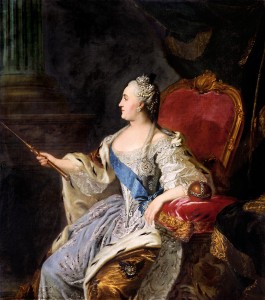Emily Smith
Revised Paper Proposal
In this paper, I want to examine the way that gender and sexuality are viewed under different forms of government. Gender and specifically women’s role in society has always been a controversial subject because different societies view women with varying degrees of equality. In the United States, women did not have full rights until the nineteenth amendment outlawed discrimination in suffrage based on gender. Yet women continue to have lower wages and have more difficulty obtaining jobs in certain fields than their male counterparts. When thinking about gender inequality and how women were only allowed full rights recently, a logical connection is the current debate on sexuality and how same sex couples continue to be discriminated against in much of the United States. The United States claims to be one of the most progressive societies in the world, and yet there are two major oppressed groups that are still working to gain equality in a country that claims to be the “land of the free”.
First I will examine one of the earliest works of literature to reference sexual relationships between two individuals of the same sex, Plato’s The Republic references the relationship between two males. I will examine Plato’s view on sexuality and gender, then the society which the philosopher lived in. How were the roles of women and sexuality viewed in classic Greek society? This question leads me to look to a government system essentially in opposition to the democratic republic of the United States, Soviet Socialist Russia. What are the similarities and differences in the ways gender and sexuality are treated in each society and form of government? How have these perspectives changed with time or have they changed at all? In my investigation I will attempt to expand upon these questions and why each society views gender and sexuality the way they do.
Originally my plan was to compare socialist and communist governments in general to the way democracy views gender and sexuality but when attempting to research I found that there was a lack of general information about each ideology and this made obtaining information much more difficult. In order to fix this problem I narrowed my research topic to three specific societies and ideologies. This has made research much easier and the information more related to the topic. I am in possession of Plato’s Republic, in which the philosopher strives to create an ideal state of justice and truth. In Bertel Ollman’s article, Social and Sexual Revolution, the NYU fellow discusses the changing views of sexuality in the social setting from the perspective of many different ideologies ranging from Marxist theories to radical liberalism. Another source which I will rely on is Disorders Of Desire Rev: Sexuality And Gender In Modern American Sexology, written by Janice Irvine, this work explores the evolution of sex in modern American culture. She investigates the psychological effects of these changes and the changing views of sex in the social setting. These resources and others such as: Socialism and Homosexuality, Gender and Society in Soviet Russia, and Greek Homosexuality will help me to investigate different perspectives on gender and sexuality during different time periods and under various government ideologies. There is enough information from these sources to support my investigation and comparison of these topics, with most of the sources available in full text online.
Works Cited
Ashwin, Sarah. “Gender and Society in Soviet Russia.” Well Placed Pottery. www.wellplacedpottery.org/alec/literature/russia.html (accessed September 30, 2012).
Harrison, Thomas. “Socialism and Homosexuality | New Politics.” New Politics. http://newpol.org/node/79 (accessed October 1, 2012).
Irvine, Janice . Disorders Of Desire Rev: Sexuality And Gender In Modern American Sexology. Philadelphia, PA: Temple University Press, 2005.
Irvine explores the convoluted psychology of sexuality and gender in modern American culture. She uses social movements, government policy, debates and research to create a summation of American sexology in the late twentieth century.
Katz, Marilyn. “Ideology and `The status of women’ in ancient Greece..” History & Theory 31, no. 4 (1992): 70.
Kon, Igor S.. “The International Encyclopedia of Sexuality: Russia.” Der WWW2-Webserver — Website. http://www2.hu-berlin.de/sexology/IES/russia.html (accessed September 30, 2012).
Loftus, Jeni. “America’s Liberalization in Attitudes Towards Homosexuality.” American Sociological Review 66, no. 5 (2001): 762-782.
Ollman, Bertel. “Social and Sexual Revolution.” The Writings of Bertel Ollman. http://www.nyu.edu/projects/ollman/docs/ssr_ch06.php (accessed October 1, 2012).
A more general view of the changes in perspectives in sexuality, Ollman discusses sexuality from varying perspectives and ideals. He provides useful background in different idealogies and time periods and how each viewed sexuality in a social setting.
Plato. The republic. Cambridge: Cambridge University Press, 2000. *Primary Source*
The philosopher explores his ideal fantasy of the “perfect” state, in which all individuals are working most efficiently towards a common goal. One of the first works to ever mention the most basic ideas of communism and socialism, Plato explores the topics of family, property, government, and what it means to be truly just and whether or not this creates happiness.
van Dolen, Hein . “Greek homosexuality.” Livius. Articles on Ancient History. http://www.livius.org/ho-hz/homosexuality/homosexuality.html (accessed October 1, 2012).

